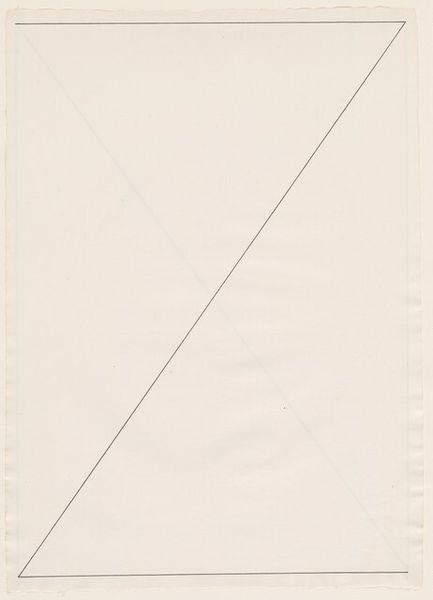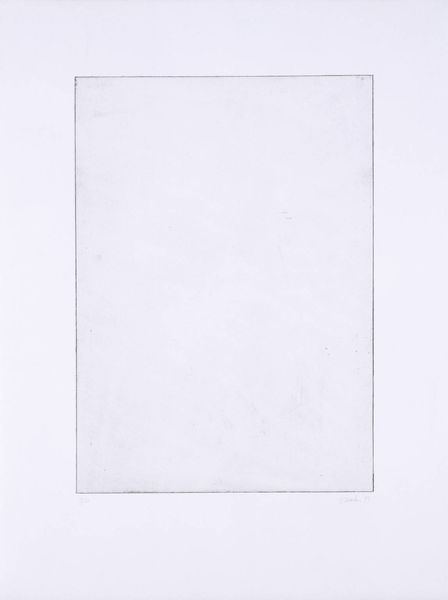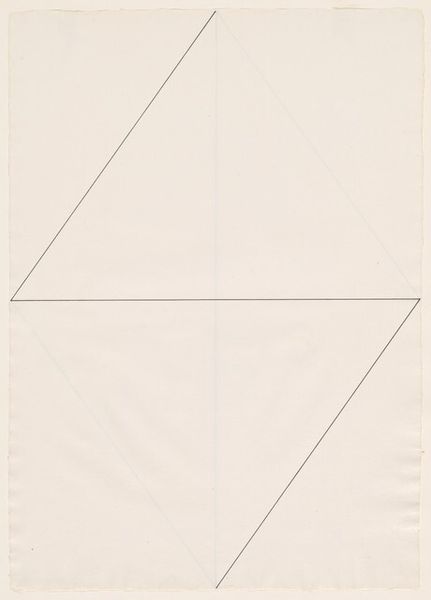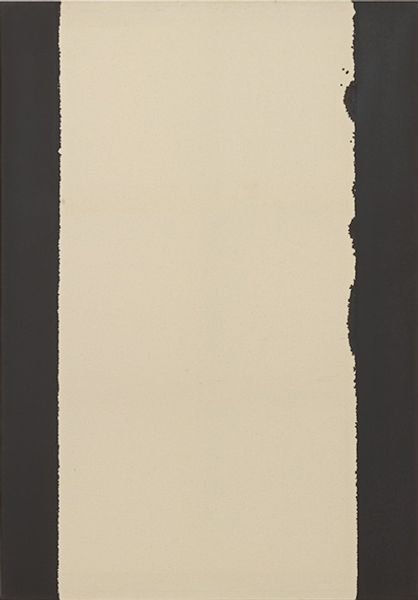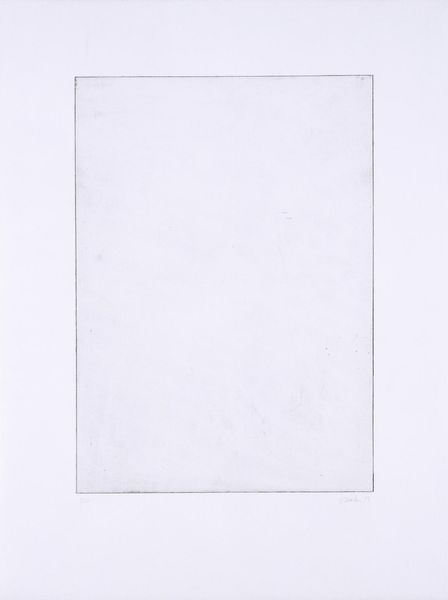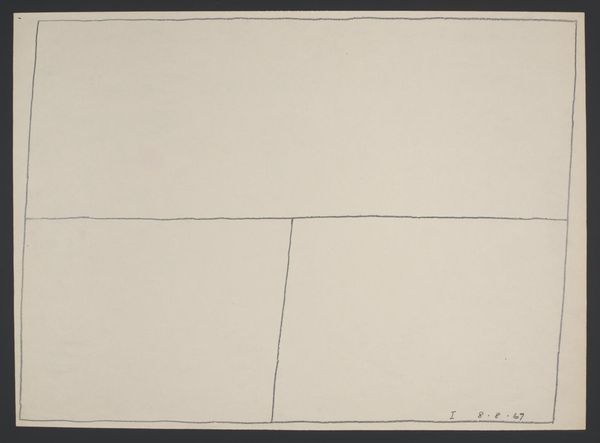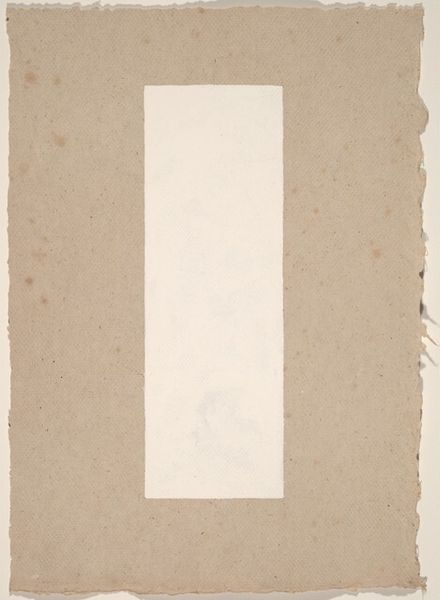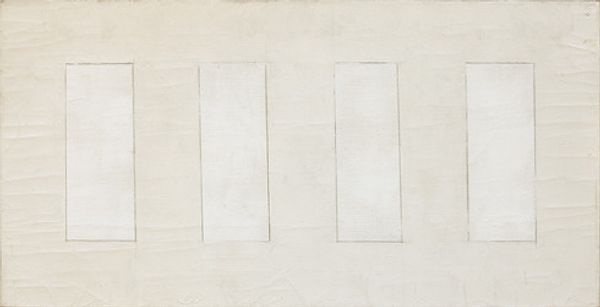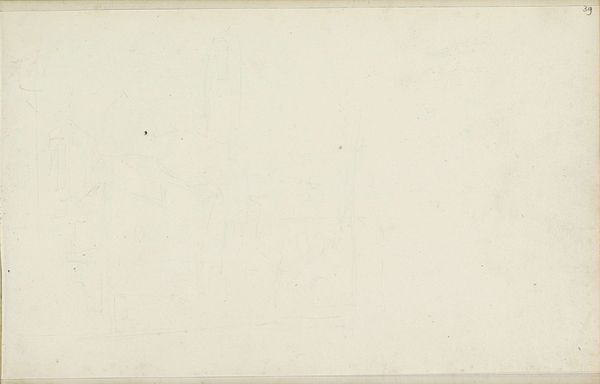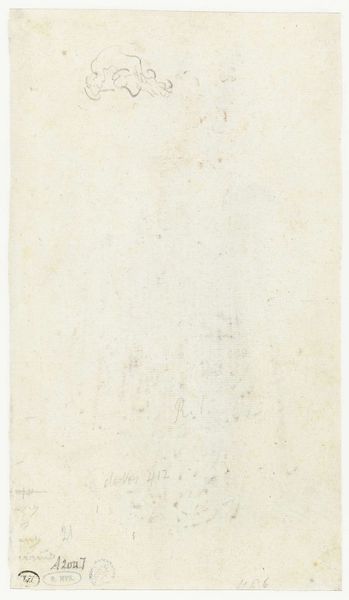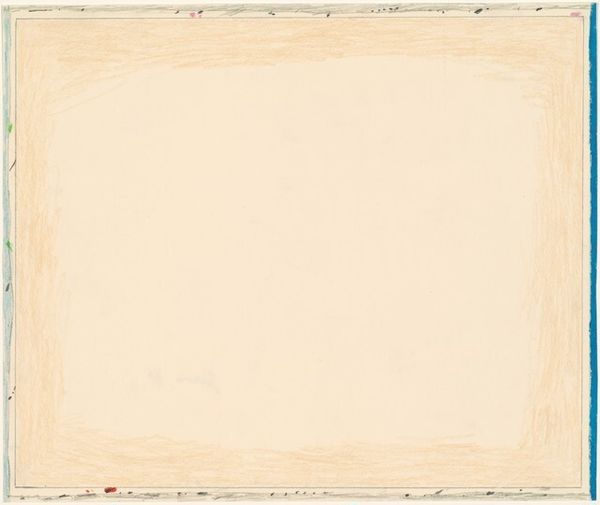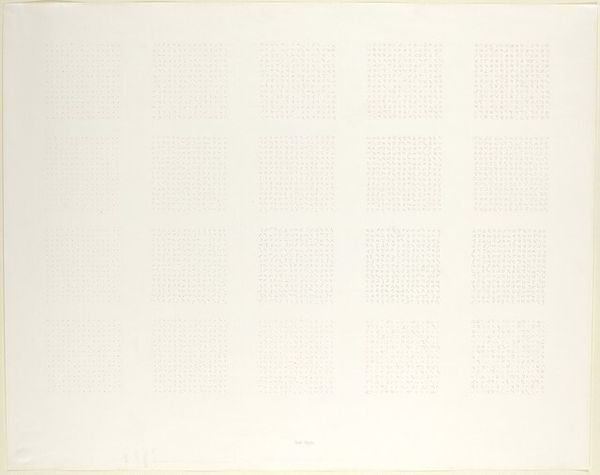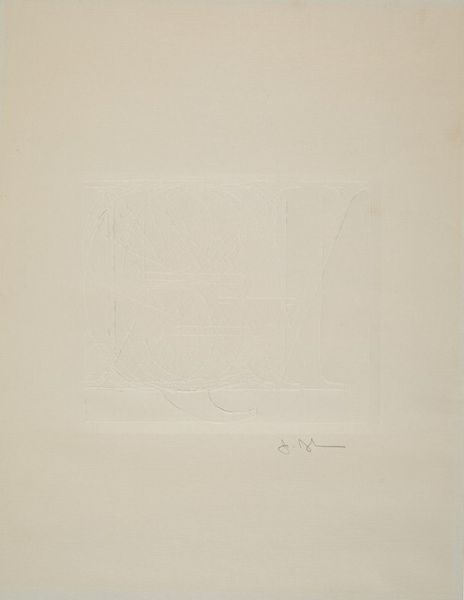
drawing
#
drawing
#
minimalism
#
geometric
#
abstraction
#
line
Dimensions: image: 58.6 x 42 cm (23 1/16 x 16 9/16 in.)
Copyright: National Gallery of Art: CC0 1.0
Editor: Here we have Jan Kubicek's "Elementary Principles #2," created between 1970 and 1975. It’s deceptively simple – just intersecting lines on paper, dividing the surface into four quadrants. There's a quiet, almost meditative quality to its minimalism. How do you interpret this work, given its historical context? Curator: Well, its starkness speaks volumes. Considering the socio-political climate of the 70s, particularly within Eastern Europe where Kubicek lived and worked, such radical simplification could be seen as a form of quiet resistance. It’s a rejection of bombastic, ideologically-driven art that was often promoted by the state. Editor: A silent protest, you mean? Curator: Precisely. Abstraction, and minimalism especially, provided artists with a space for critical commentary that circumvented direct confrontation. It's about challenging established norms through reduction and suggestion rather than outright declaration. What’s interesting is how institutions then embraced and codified minimalism, essentially normalizing what was once subversive. Editor: So the subversive becomes the established? Curator: Often. This piece, with its seeming emptiness, begs questions about the function and expectations placed upon art. What is art supposed to *do*? Is its value in representation or in prompting contemplation? The public role of art shifts, from serving power to questioning it. What do you make of the lines themselves? Are they perfect? Editor: Not quite. There's a slight imperfection, a wobble. I suppose that highlights the human element, even in something so geometric. Curator: And perhaps underscores the artist's position, finding freedom, subtly, within constraints. Editor: That's a powerful point. It definitely makes me see the drawing as more than just a geometric exercise. It carries that subtle history of art being something beyond surface level, constantly responding to a specific time and place.
Comments
No comments
Be the first to comment and join the conversation on the ultimate creative platform.
